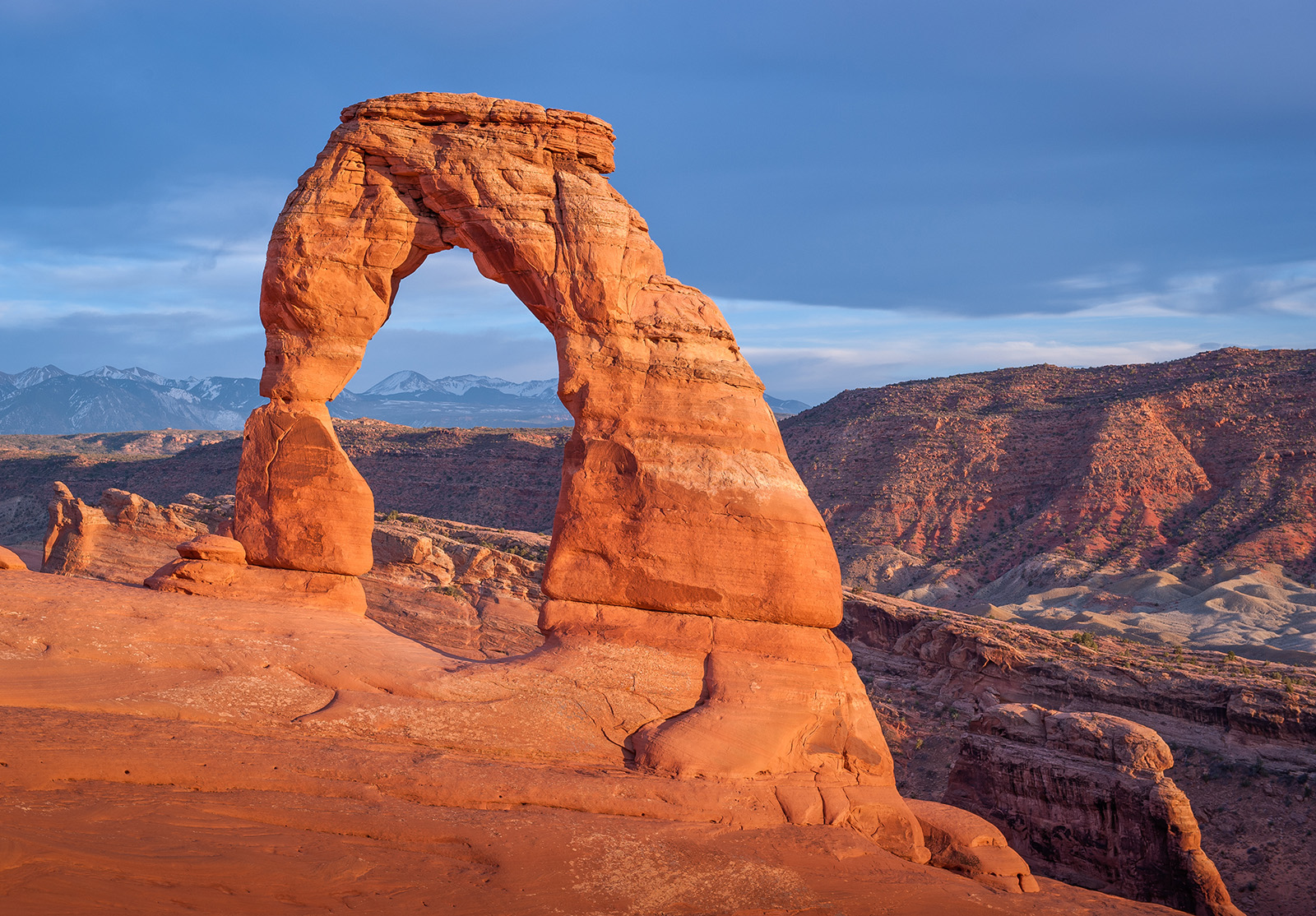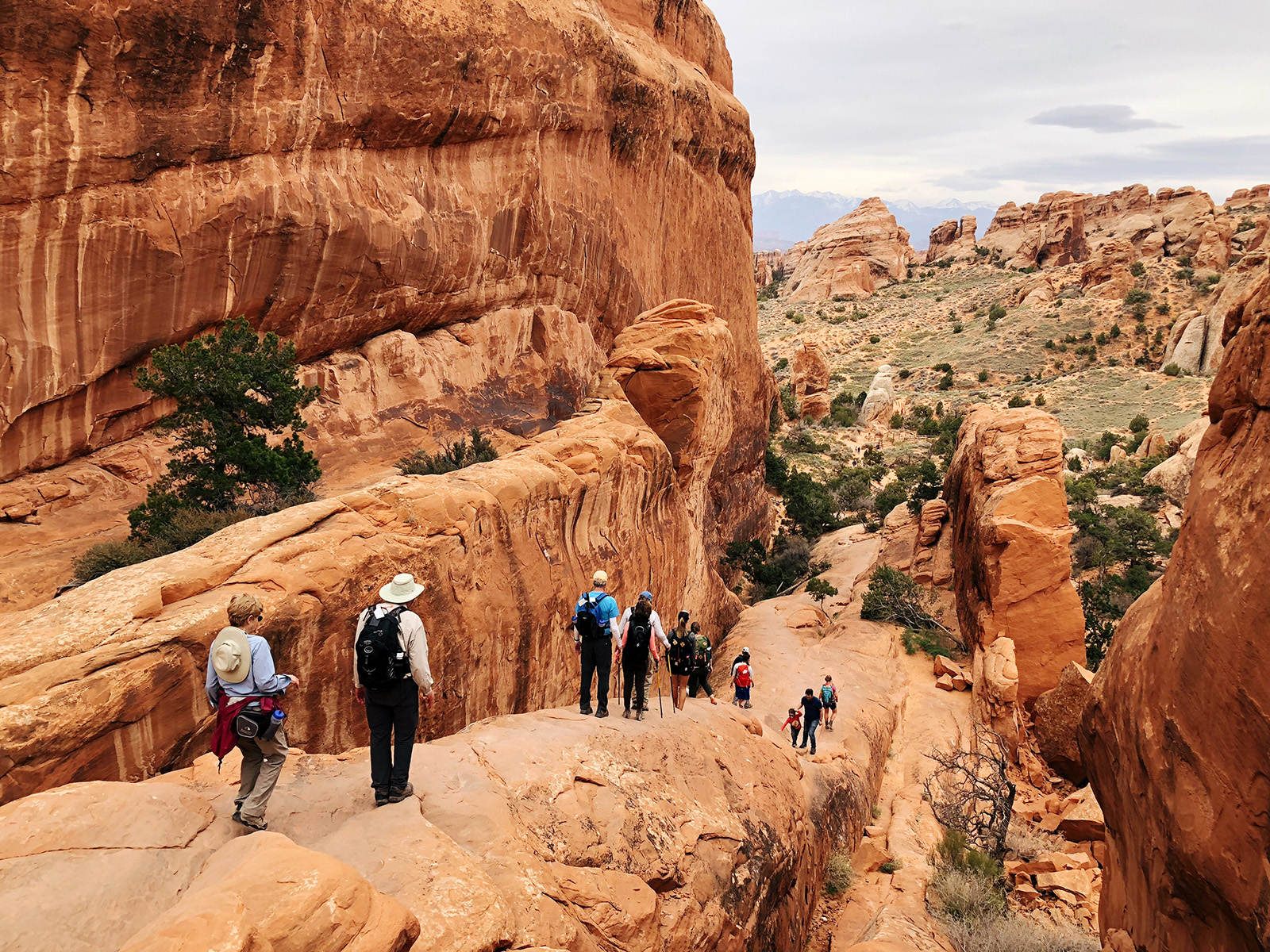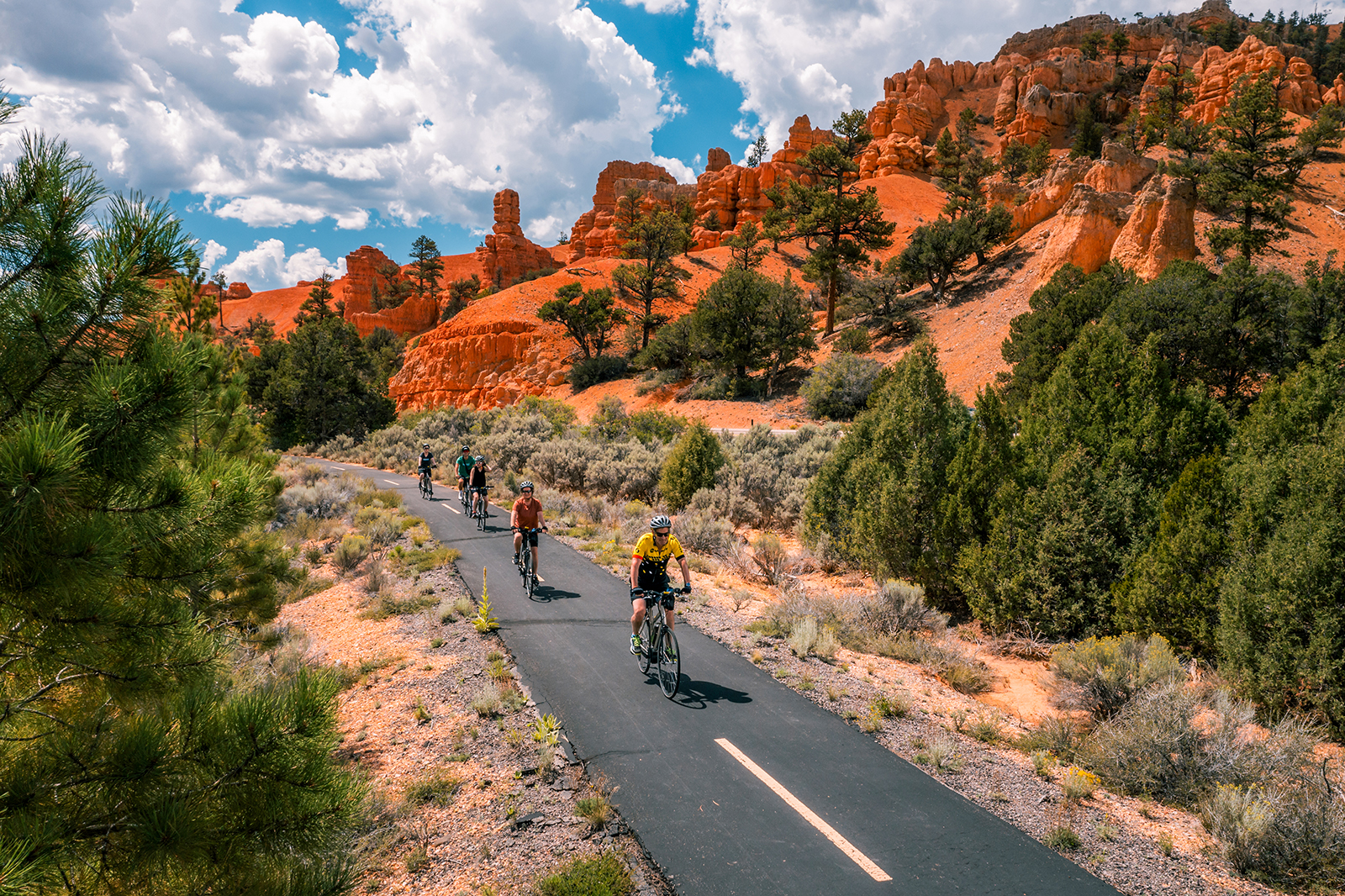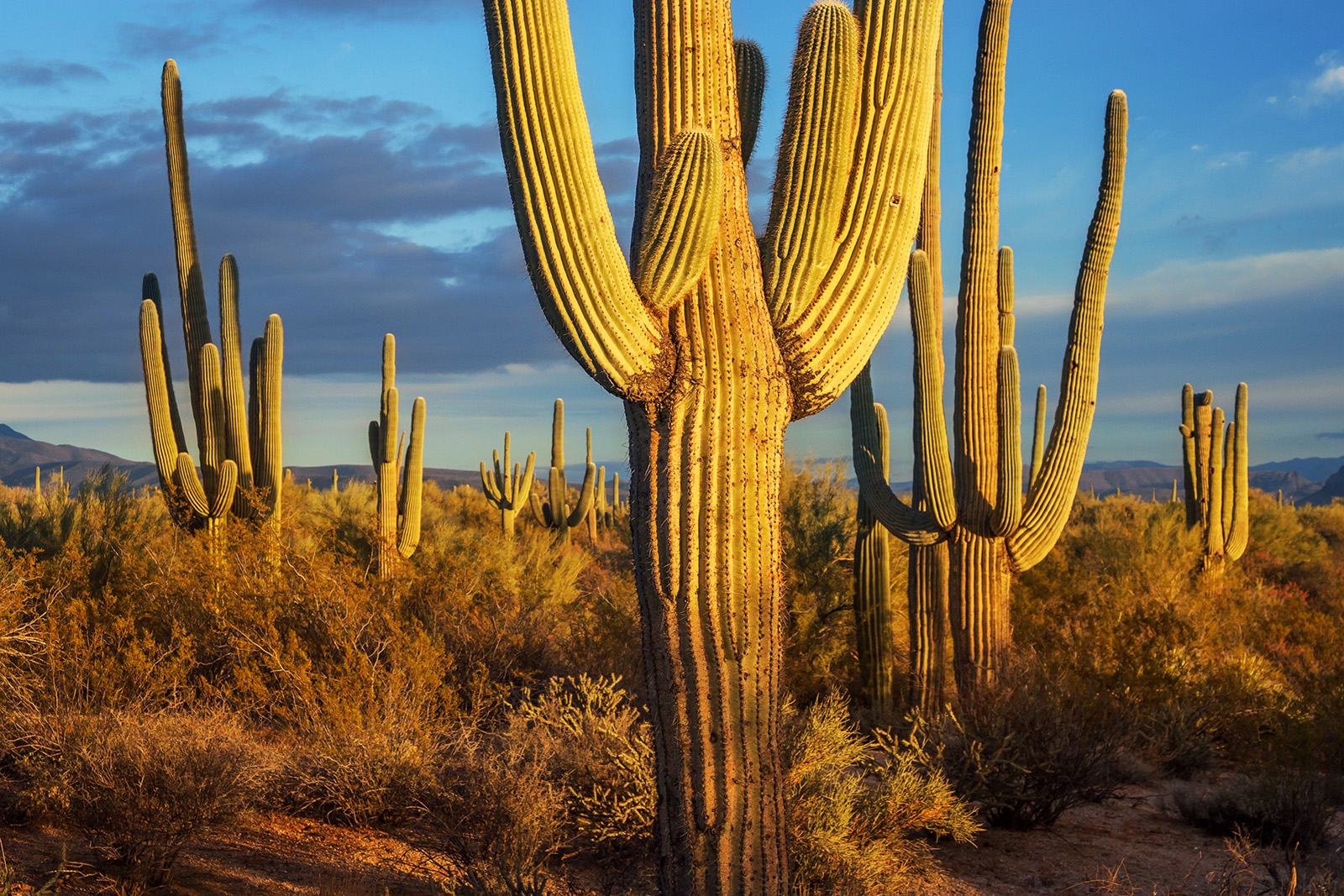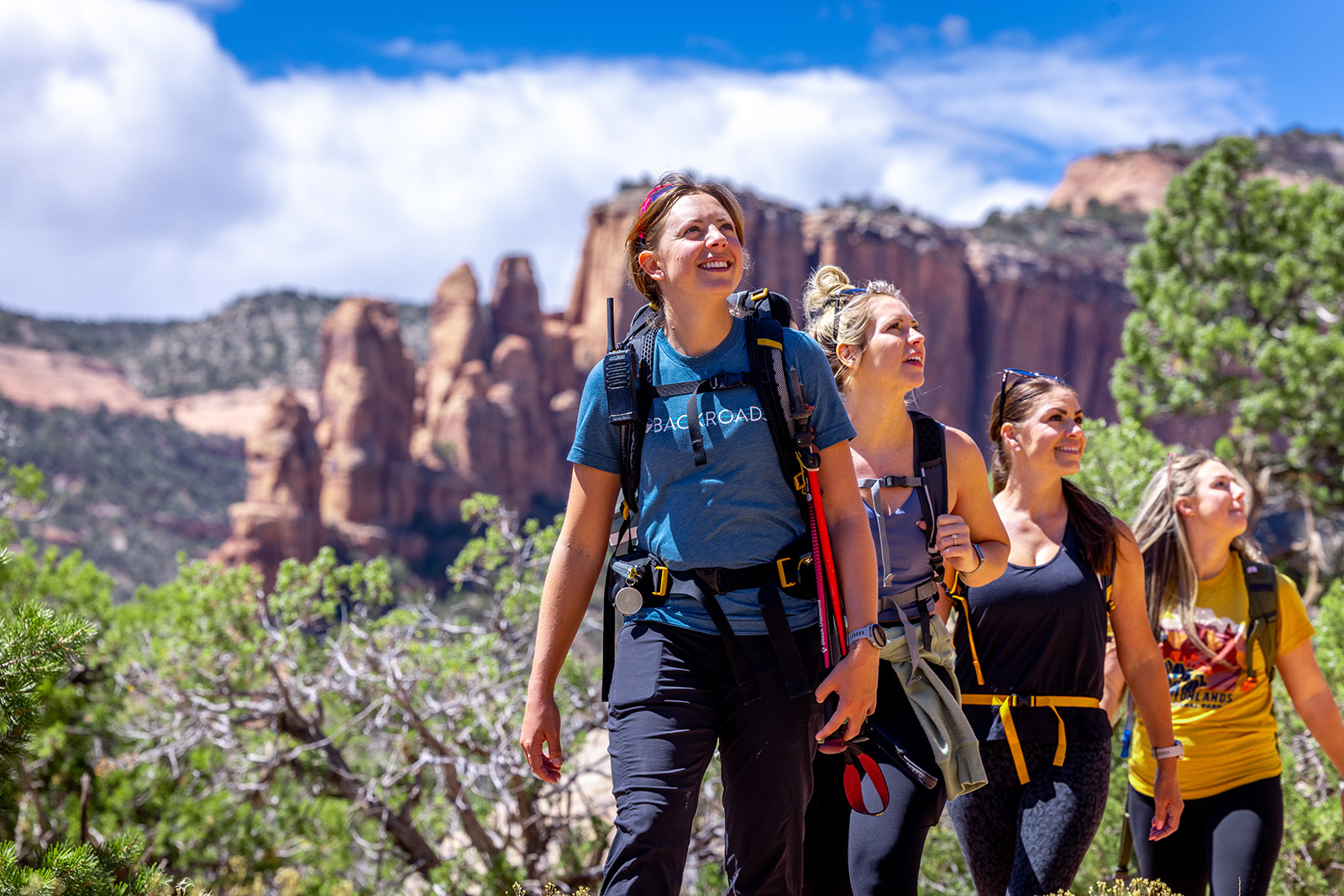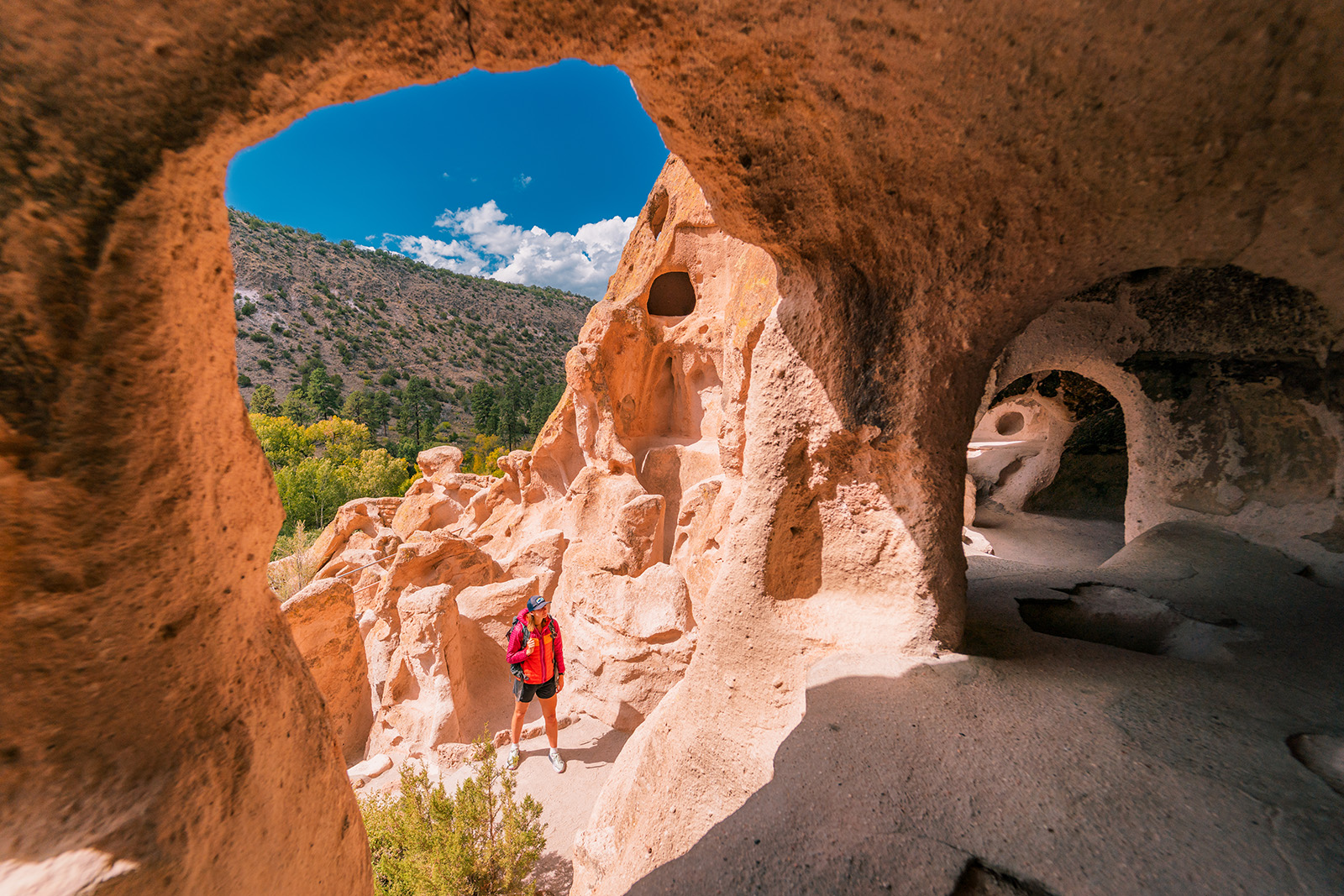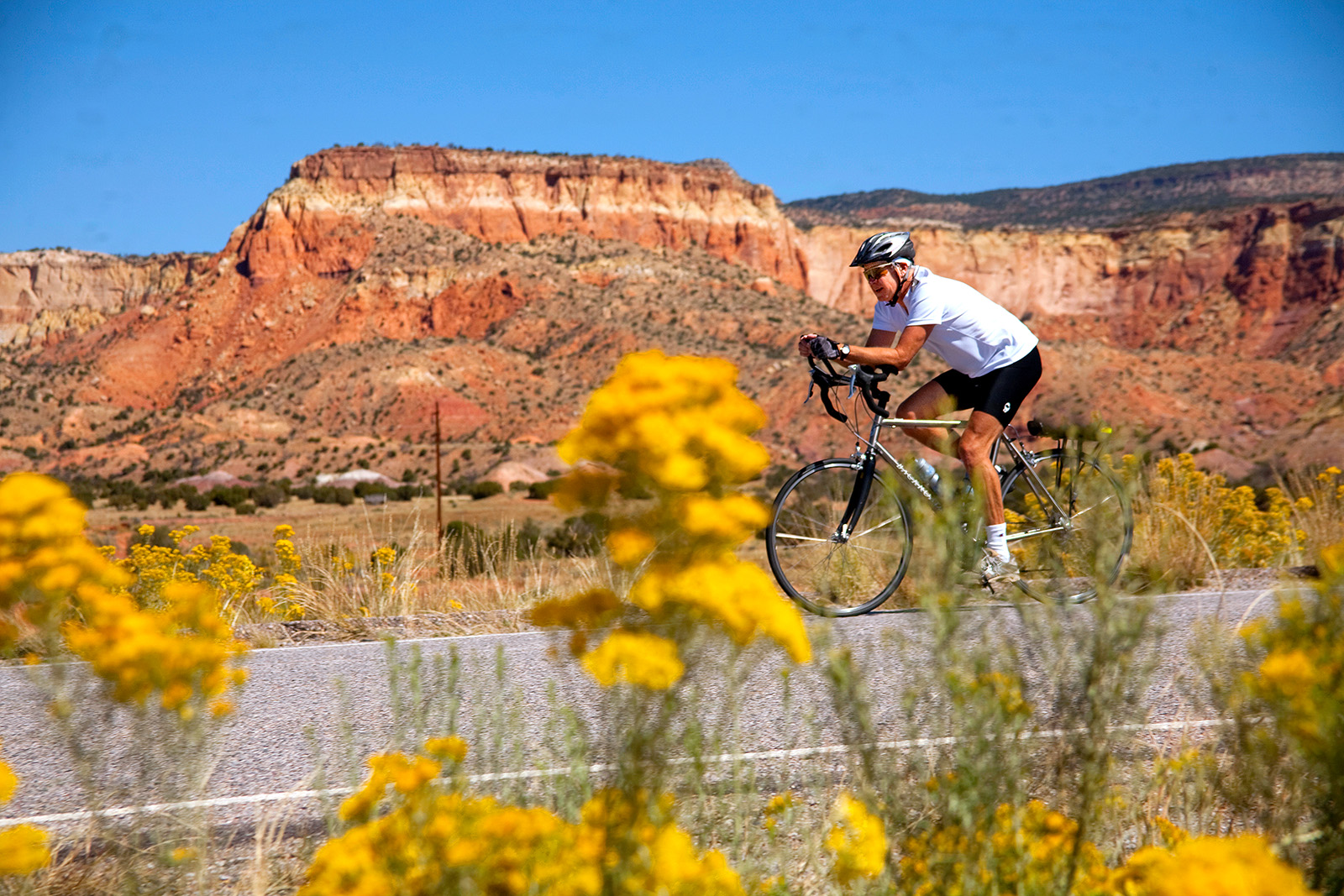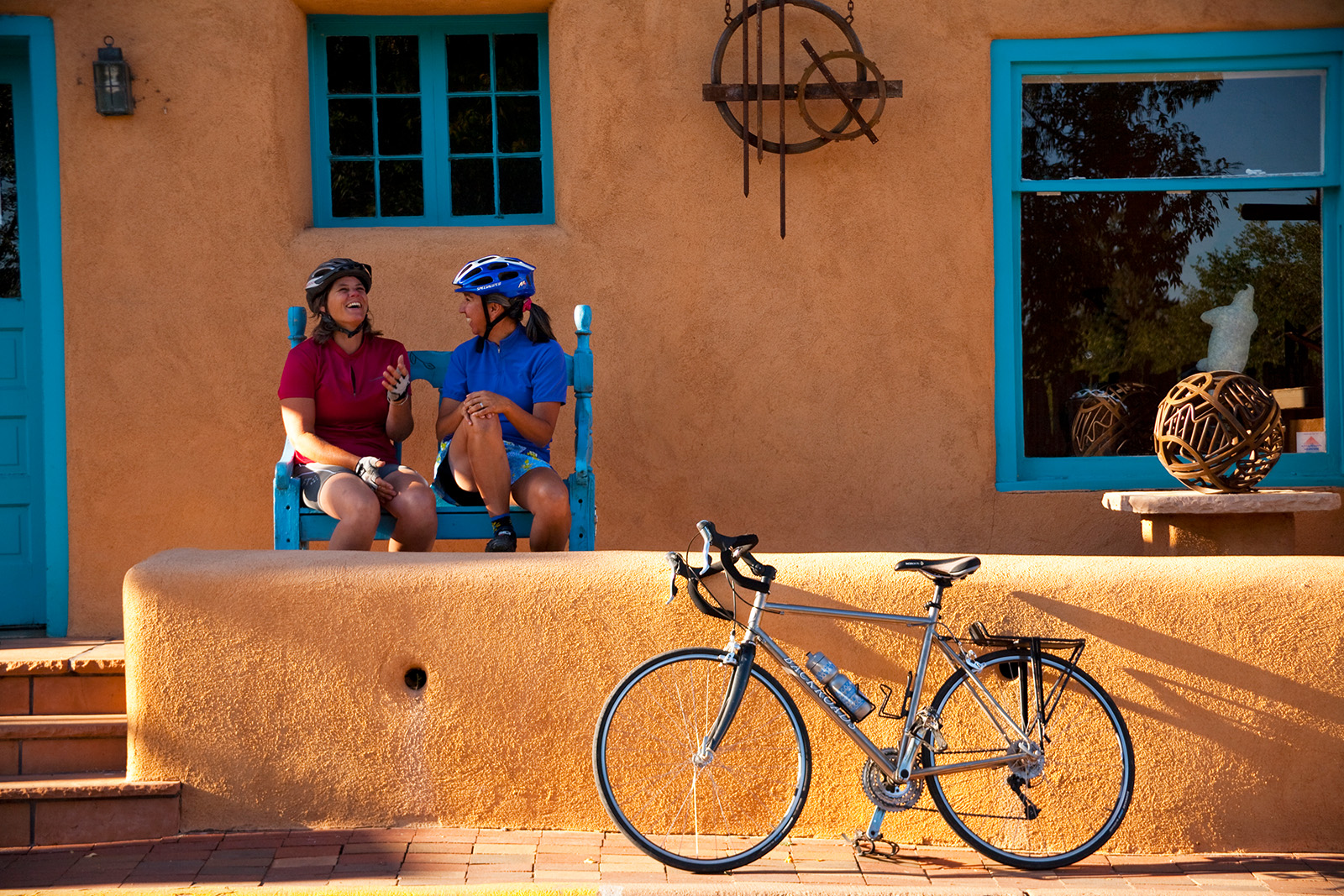Rugged, radiant and steeped in stories, the American Southwest is more than a destination—it’s a journey through layered landscapes and layered histories. From the sandstone arches of Utah to the red rock canyons of Arizona, the cliff dwellings of New Mexico to the alpine mesas of Southern Colorado, this region invites adventure travelers to explore on foot and by bike, tracing the footsteps of Ancestral Puebloans, Spanish explorers and the Indigenous communities that still call this land home. Wherever you're trekking or riding in the Southwest, each trail tells a tale—etched in stone, sun and spirit.
Utah
Utah is a sandstone symphony of arches, canyons and cliffs—but it’s also a land inscribed with the stories of ancient civilizations and pioneer resilience. Utah's iconic Mighty Five national parks—Zion, Bryce Canyon, Arches, Canyonlands and Capitol Reef—are not just geological marvels but sacred spaces shaped by centuries of Indigenous presence. Canyonlands especially is riddled with ancient granaries, pictographs and petroglyphs—offering an immersive time-travel experience for those willing to venture deep on foot or bike.
Utah’s history is deeply entwined with its dramatic landscapes, which shaped the lives of its earliest inhabitants. The Ancestral Puebloans (also called Anasazi) and Fremont peoples left a striking legacy of rock art, granaries and cliff dwellings—many preserved in what is now Canyonlands and Arches National Parks. What's particularly fascinating is how these early civilizations adapted to the arid environment, developing unique methods for water storage and agriculture. Take to the canyons and see for yourself the evidence of these remarkable people’s lives.
Centuries later, in the mid-1800s, the Mormon migration redefined Utah’s future. Seeking religious refuge, Brigham Young led thousands westward, ultimately establishing Salt Lake City in 1847. This was one of the most organized mass migrations in American history.
The national parks in Utah are central to both its history and identity, each highlighting a different geological wonder. Zion, Utah’s first national park (established in 1919), preserves the Virgin River’s striking canyon and played a crucial role in the early 20th-century push to make the Southwest accessible to tourists. These parks not only attract millions annually but also preserve thousands of years of Indigenous presence, pioneer struggles and the natural forces that sculpted the land.
The state’s surreal geology is not just a backdrop but a key player in its history. Zion and Bryce Canyon became early symbols of the American Southwest, drawing tourists and artists alike. The effort to preserve these lands also sparked conversations over land use, water rights and Indigenous access. Today, national parks like Arches and Canyonlands don’t just display beauty—they echo human resilience, spiritual beliefs and ongoing questions about stewardship of sacred landscapes.
Arizona
Arizona’s landscape is an open-air museum of geologic wonders and Old West drama; ideal for adventurous travelers who crave both physical challenge and rich storytelling, traversing lands once roamed by Indigenous peoples and later by cowboys, prospectors and pioneers.
Arizona’s most gripping historical arc may be its role as a place of profound transformation—of people, landscapes and power. Arizona’s human history spans thousands of years, beginning with Paleo-Indians and later, the Hohokam, Mogollon and Ancestral Puebloan cultures. For over a thousand years, complex civilizations like the Hohokam engineered vast irrigation networks in the unforgiving Sonoran Desert. Many of these ancient systems are still visible today to glance into the cultures of the past.
Spanish explorers arrived in the 16th century, followed by US expansion in the 19th century. Arizona became a US territory in 1863 and achieved statehood in 1912. Mining and railroads spurred development, but Indigenous presence remained a major aspect of the region's history.
Arizona’s national parks reflect this deep cultural and geological heritage. The Grand Canyon is not just Arizona’s natural crown jewel—it’s a symbolic and literal cross-section of history. As a UNESCO World Heritage Site, is not only one of the most iconic landscapes in the world but also sacred to numerous Native American tribes, including the Havasupai and Hopi. Saguaro National Park near Tucson protects the unique Sonoran Desert ecosystem to explore, highlighting the importance of desert flora and Native American use of desert resources. Arizona is where raw adventure meets the mythic West—perfect for those who want their sweat-earned miles to be rich with story.
Colorado
Southern Colorado is a land where alpine grandeur meets ancient mystery—a dream for travelers drawn to altitude, legends and living culture. Its history is a rich collision of civilizations at the edge of empires. Long before the US formed, the region was home to the Ancestral Puebloans, notably in the Mesa Verde area, where intricate cliff dwellings reveal sophisticated building and agricultural practices and remain some of the most iconic archaeological sites in North America.
After their decline around 1300, the area was influenced by nomadic Ute and Apache peoples. Spanish explorers and settlers arrived in the 16th and 17th centuries, establishing some of the earliest European settlements in what is now the US. Later, the area became part of Mexico and then was ceded to the US in 1848. The San Luis Valley saw one of the earliest permanent Hispanic settlements in Colorado in 1851, blending Catholic, Native and frontier traditions.
Perhaps the most compelling aspect of this region’s history is its persistent multiculturalism. Places like the stunning Sangre de Cristo Mountains and the Great Sand Dunes were both sacred to Indigenous peoples and landmarks for settlers. You can experience the breathtaking spots for yourself in this irresistible playground for adventurous legs. Mesa Verde National Park, designated in 1906, was the first park created to protect cultural heritage rather than natural scenery. Its preservation of over 600 cliff dwellings offers a profound glimpse into the daily life and resilience of the Ancestral Puebloans. Exploring nearby Canyons of the Ancients National Monument, you’ll discover lesser-known ruins and petroglyphs along quiet trails.
These parks preserve not just dramatic landscapes, but the stories of the people who lived in harmony with, and were challenged by, the environment. Southern Colorado’s trails climb through layers of history, from sacred indigenous lands to boomtowns lost to time—perfect for those who want elevation and inspiration in equal measure.
New Mexico
For bikers and hikers with a taste for ancient mysteries and high desert beauty, New Mexico delivers a journey through time and terrain. The ancestral homelands of the Ancestral Puebloans offer a surreal experience among vast stone structures, celestial alignments and petroglyph-lined trails. Exploring these remote sites is like stepping into a vanished world of astronomical precision and communal ingenuity.
New Mexico’s history is a unique fusion of Native American, Spanish, Mexican and American influences. Indigenous groups like the Puebloans, Navajo and Apache have long histories here, evidenced by extensive archaeological sites. The arrival of Spanish settlers in the 16th century led to the establishment of missions, and later, New Mexico became part of Mexico, and finally the United States in 1848. Adventure seekers can follow parts of trace routes once used by Native tribes, Spanish explorers and later settlers.
The state’s landscape tells stories of resilience and resistance. Hiking or biking, the area’s cliff dwellings and desert landscapes are a reminder of the deep connections between people and land. In the state capital of Santa Fe, a UNESCO-designated creative city, you can learn the rich history and culture through the museums and desert parks that surround it.
What sets New Mexico apart historically is its juxtaposition of ancient and ultra-modern. Bandelier National Monument protects the remnants of Ancestral Puebloan cliff dwellings amid stunning canyon terrain. Carlsbad Caverns National Park showcases one of the largest and most spectacular cave systems in the world, a geological marvel formed by sulfuric acid dissolution. Fast forward to the 20th century, and New Mexico was a key site in the development of nuclear weapons. The eerie brilliance of White Sands National Park, featuring the world's largest gypsum dune, lies adjacent to where the first atomic bomb was tested in 1945, combining natural splendor with Cold War-era military history.
As your journey winds through the Southwest’s bustling artistic cities, national parks, ancient dwellings and high desert trails, the line between past and present blurs. Here, every adventure offers more than a view—it offers a connection: to the people who shaped this land and to the enduring spirit of exploration.





